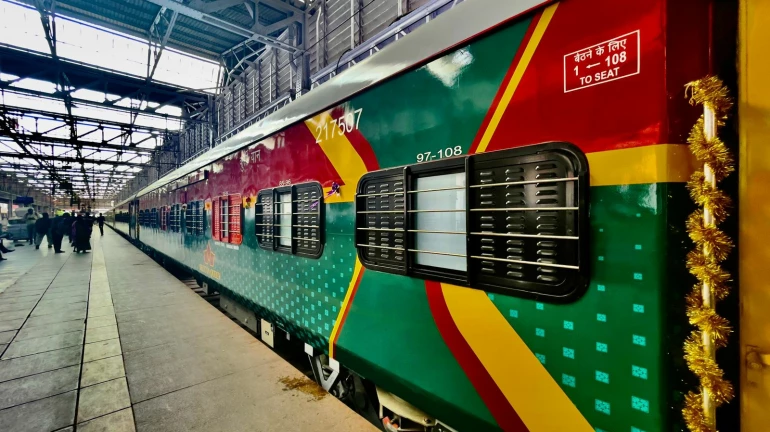
Indian Railways recently announced the launch of Mumbai’s first Amrit Bharat Express, a new long-distance weekly service designed to improve connectivity between Lokmanya Tilak Terminus (LTT) and Saharsa in Bihar. The train was flagged off by Prime Minister Narendra Modi during a ceremony held at Saharsa, with authorities highlighting the initiative as a significant step towards strengthening non-AC rail travel for the masses.
Officials explained that the Amrit Bharat Express had been introduced with a focus on affordability, comfort, and speed, aiming to reduce travel time by nearly 4 to 5 hours compared to existing alternatives. Although early projections suggested a 10-hour travel plan, the final schedule was adjusted to just over 24 hours. Railways clarified that despite the longer duration, the journey would still be considerably faster and more convenient than other options currently available.
The operational plan reveals that the train departs from Saharsa at 5:00 AM and reaches Mumbai's LTT station by 3:00 PM the following day. Enhanced amenities have been incorporated for both sleeper and general class passengers to improve the overall travel experience. Authorities further stated that the route has been carefully curated to optimise speed, with stops limited to major junctions such as Samastipur, Muzaffarpur, Hajipur, Patliputra, Danapur, Buxar, DDU, Prayagraj Cheoki, Jabalpur, Itarsi, Bhusaval, Manmad, and Kalyan. Intermediate stations were intentionally bypassed to maintain a quicker transit schedule.
The Indian Railways administration described the launch as a reflection of their broader modernisation agenda, which seeks to expand accessible, efficient, and affordable travel for large segments of the population. It was emphasised that the Amrit Bharat Express would set a new benchmark for long-distance, non-AC train services by combining faster travel times with upgraded onboard facilities.
Authorities positioned this initiative as part of the government's wider mission to promote equitable mobility across India, particularly for regions that remain underserved by premium rail services. The new service was viewed as an important move towards bridging travel gaps and enhancing infrastructure to support the growing demand for better long-haul connectivity.





